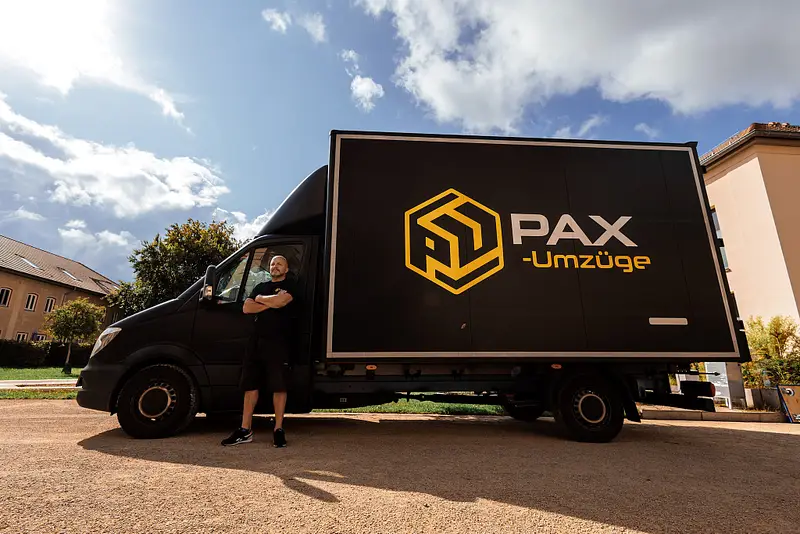
Company moves – be it a physical change of location or a strategic shift – are a kind of crucial moment for any business. Transitions affect operational efficiencies, employee morale, and every other aspect of the company. Effective company moves management is crucial to ensure the least possible disruption to work while gaining all opportunities to make good, new use of the new location. Company moves include moving into new markets, changing office space, and reorganization of departments. It is essential to understand the intricacies involved in such company moves to achieve long-term success. We will go through the most imperative facets of company moves in this guide, from preparation and planning before the move to after-move integration; this will give insights on how these changes can be dealt with efficiently.
Understanding Company Moves: What They Are and Why They Matter
Company moves ( Aka Firmenumzüge ) refer to any significant change concerning the structure, location, or operations of an organization. In more straightforward terms, office space shifting, relocating employees, rebranding, a change of business models, or any other changes that can be referred to as a company move. The importance of company moves lies in the way they represent a business’s need to reposition itself in response to market demands or growth opportunities, or just as a matter of operational need. Whether it is relocation to a cheaper location or strategic alignment, company moves are typically an important step in change and require an understanding of what the aim of such a move is, which will ensure smooth transition into new premises and maintain the momentum of the business.
Key Factors to Consider Before Making a Company Move
The business should first analyze various key elements before moving the company can be successful. One of them is location since it may determine proximity to the clients, suppliers, and even talent. Businesses must also consider the financial implications of a move, for example relocation or restructuring costs. Meanwhile, the legal requirements, for example permits or zoning regulations, are important to be better understood. Other factors to be considered would be employee needs and how to reduce the disruption to the workflow. Careful planning in these respects can also minimize the risks involved and result in a smoother transition.
The Impact of Company Moves on Employees and Culture
Office relocations or changing business strategies may involve changes in the way teamwork, communication, and morale are done. Employees might be left with questions about the future or even concern over the impact on their careers. However, a company move, well-managed, can give it an opportunity for growth, collaboration, and innovation as well. There is something of a support system which goes with change, where people in the company may be involved in supporting it. This approach does much to maintain morale as it bolsters company culture in the midst of change.
How to Plan a Successful Company Move: A Step-by-Step Guide
Planning a successful company move will require serious pre-construction and planning attention. The first step here is defining the need for a company move, as this will change how one wants to move ahead with optimization of operations, access to new markets, or workers’ satisfaction. The next aspect involves logistical discussions on timeline, budget, and resources for the company. Identify legal, regulatory, or other requirements that the organization may be under and take into account smoothing out technologies as well as communication systems. It is also important to train your staff with explicit instructions and constant support. Lastly, post-move, assess whether the transition was effective and solicit feedback on how to do it better next time.
Legal and Financial Considerations in Company Moves
Legal and fiscal considerations are critical for any business relocation. Corporations are tasked to be knowledgeable of local regulations, for example, zoning laws, lease agreements, permits, that may influence relocation or reorganization. The cost of a move should also be put into the budget by companies, including real estate, equipment, and employees. Moreover, some may involve tax implications or changes in business liabilities based on the location or structure of the move. Referral to legal and financial experts early during the process can help companies comply with regulations and prevent some headaches and costs or delays.
Technology and Tools to Support Seamless Company Moves
That is how technology makes its key role in maintaining company moves, nowadays advancements that shape our world. Tools which are to do with the management of a project, communicating and optimal workflow can be included in the general process of moving to minimize disruption. Cloud-based systems automatically include easy data transfer, whilst collaborative platforms keep all links between teams no matter where they are located. Finally, automated scheduling tools and real-time tracking systems ensure that operations with logistics occur smoothly. Investing in the right technology will increase productivity, maintain business continuity, and minimize the issues associated with managing a move.
Company Moves and Business Continuity: Ensuring Minimal Disruption
The continuity of business operations must be maintained during a company move. Therefore, thoughtful planning and strategic scheduling can ensure that necessary functions remain operational on the days of the move. Effective management of clients’ and customers’ expectations in the communication of service interruption is guaranteed. In addition, backup systems and contingency plans must be developed to plan for unforeseen challenges. The overall emphasis on business continuity would ensure a proper transition within the company while keeping intact its reputation and consistent service.
How Company Moves Can Strengthen Brand Identity and Market Presence
An efficient performance of a company relocation could act as an excellent opportunity for reinforcement of a brand identity and market presence. Moving into a new office or implementing a rebranding might alert your customer and other stakeholders of a creative business that is booming. New markets might open up, certain talent may be attracted to come to work, or fresh collaboration opportunities might come about. It can be done through the process, and subsequently synchronized with a company’s long-term plan to develop this transition further toward strengthening brand values, higher customer loyalty, and gaining a level of competitiveness in the market.
Case Studies: Successful Company Moves in Various Industries
One good source of best practices can be found by researching case studies of successful company moves. From the outplacement of manufacturing firms to the relocation of technology companies to centers of innovation, the examples represent the successful planning and execution that produces a turnaround in positive trends. The successful move typically involves effective communication, proper resource allocation, and emphasizing the well-being of the employees. The same will be applicable to market conditions, which require good assimilation through transformation, enhanced further by the move.
The Future of Company Moves: Trends and Innovations to Watch
Proximity or near-future company movements may be influenced by emergent trends and innovations in technology. The general trend in office relocations evolves with the integration of remote work stations and hybrid work models within the traditional work station. Most companies opt for a smaller and flexible workstation. Sustainability, which will be all about being green, too, plays a much bigger role in office design and relocations in the future. Further refinements in automation, AI project management, and virtual collaboration tools will further make moves streamlined. As business change adapts to the shifting economic and technological landscapes, so too will the company move evolve to encompass new strategies for efficiency, sustainability, and employee engagement.


